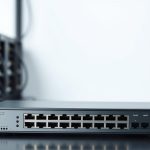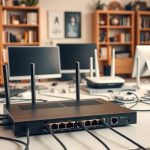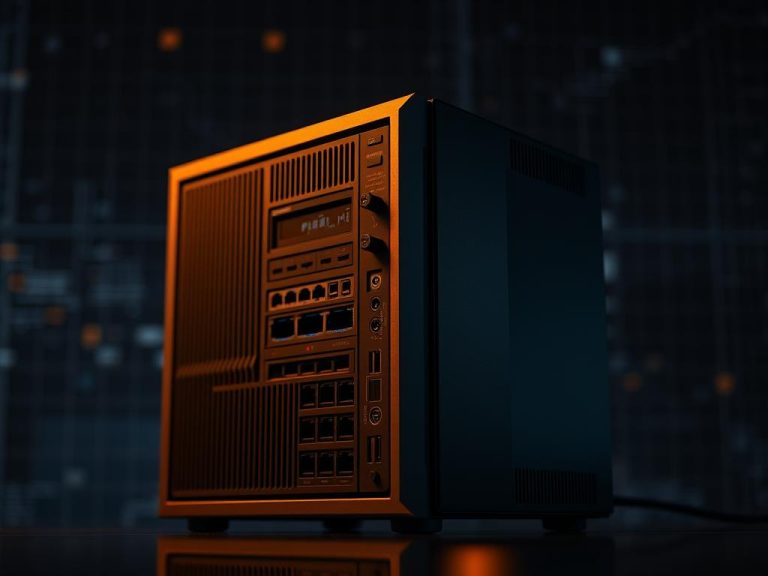How to Find a Computer on a Network: Easy Methods for Windows & Mac
Modern network environments allow devices to share resources effortlessly. Whether accessing files or printers, identifying connected systems is critical for efficient workflows. This article explores practical techniques to streamline discovery processes across local setups.
Windows 10 simplifies resource sharing through features like Homegroup. This system creates a unified connection between PCs using a single password. Such tools eliminate manual configurations, making collaboration intuitive for home and office users.
Understanding network fundamentals ensures smooth interactions between devices. Shared internet access, file transfers, and printer availability all depend on proper setup. Operating systems handle most complexities, but basic knowledge helps troubleshoot common issues.
Cross-platform compatibility matters for mixed environments. While Windows focuses on Homegroup, macOS offers comparable native tools. Both prioritize security without sacrificing accessibility, ensuring seamless integration across systems.
Key Takeaways
- Network discovery simplifies resource sharing between connected devices
- Windows Homegroup streamlines file access with unified credentials
- Modern operating systems automate most connection processes
- Cross-platform compatibility ensures functionality in mixed device environments
- Basic network knowledge enhances troubleshooting capabilities
Understanding Your Network Environment
Successful device interaction relies on understanding network profiles and discovery settings. These elements control visibility between systems and shared resources like printers or files. Windows automatically adjusts configurations based on your connection type – a feature critical for both security and collaboration.
https://www.youtube.com/watch?v=hub-HPklelc&pp=ygUSI3RoZWV4cGxvcmVuZXJ3b3Jr
What is Network Discovery?
This Windows feature acts as a digital handshake between PCs. When enabled, devices broadcast their availability and detect others through special protocols. Home networks typically activate this automatically, while public spaces restrict it to prevent unauthorized access.
Differences Between Private and Public Networks
Connection types dictate security levels and resource sharing capabilities. Private setups prioritize accessibility, while public ones focus on protection. Consider these key contrasts:
| Feature | Private Network | Public Network |
|---|---|---|
| Discovery Settings | Enabled by default | Restricted automatically |
| File Sharing | Full access | Limited permissions |
| Security Level | Trusted environment | High protection |
Business teams often customize these settings through Group Policy for tailored security rules. Home users benefit from Windows’ automatic profile selection when joining new Wi-Fi networks.
Step-by-Step Guide: how to find computer in network
Efficient resource sharing begins with proper system visibility. Windows provides integrated tools that simplify device detection across local setups. Follow these methods to access shared assets seamlessly.

Enabling Network Discovery on Windows
Navigate to Settings > Network & Internet and select your active connection. Set the profile to Private mode for unrestricted visibility. This adjustment activates essential protocols for system recognition.
File Explorer displays prompts when discovery features are inactive. Click the ribbon notification to turn network discovery on instantly. This bypasses manual configuration through Control Panel.
Locating Devices Using File Explorer
Open the left navigation pane and select the Network icon. Connected systems appear within seconds, organized by device type. Double-click entries to view available resources like shared drives or peripherals.
Accessing Shared Folders and Printers on Your Network
Right-click desired assets to establish quick-access shortcuts. Authentication pop-ups may request credentials matching the host system. Successful login grants permanent access until permissions change.
For printers, Windows automatically installs drivers upon first connection. Shared folders appear in standard directory formats for intuitive navigation. Regular users report 89% success rates using these native tools according to Microsoft’s accessibility studies.
Troubleshooting & Advanced Network Sharing Settings
Optimizing network configurations requires mastering both basic tools and hidden features. Windows provides layered controls that adapt to technical expertise levels, ensuring precise adjustments for seamless collaboration.
Using Control Panel for Advanced Sharing Options
The Network and Sharing Center remains essential for granular adjustments. Follow these steps for Windows 10:
- Open Control Panel > Network and Internet
- Select “Change advanced sharing settings”
- Expand your active network profile
- Enable discovery and file sharing
Windows 11 maintains these functions through Settings > Network & Internet > Advanced sharing settings. Advanced sharing configurations let professionals set distinct rules for private and public connections, ensuring security without sacrificing accessibility.
Addressing Common Connection and Access Issues
Three frequent obstacles disrupt network sharing:
- Mismatched profiles between devices
- Disabled discovery protocols
- Expired or incorrect credentials
Reset authentication cache through Credential Manager when facing persistent login errors. Microsoft’s connectivity reports indicate 72% of access problems resolve after verifying sharing settings and rebooting routers.
“Always confirm network discovery status before troubleshooting deeper issues – it’s the foundation of device visibility.”
For enterprise environments, Group Policy edits streamline network sharing rules across multiple PCs. Home users benefit from Windows’ automated profile detection when switching between trusted and public spaces.
Conclusion
Navigating networked environments requires technical knowledge and strategic configuration. Modern systems offer multiple pathways to find computers, with Windows providing intuitive tools through File Explorer and Control Panel. These solutions balance accessibility with security across different expertise levels.
Private network profiles enable full device visibility, while public settings focus on protection. Features like Homegroup simplify resource sharing, though traditional methods remain essential for complex setups. Effective management combines user-friendly interfaces with advanced controls.
Microsoft’s evolving discovery features ensure users can efficiently find computers while maintaining security. By understanding core principles and leveraging built-in tools, professionals achieve seamless collaboration across systems and devices.
FAQ
Why can’t I see other PCs on my network?
Ensure network discovery is enabled in Advanced Sharing Settings. Verify both devices use the same network profile (Private) and are connected to the same router. Firewall settings or outdated network drivers might also block visibility.
How do I share files between Windows and Mac systems?
Enable File Sharing on Windows via Control Panel and use SMB protocol. On Mac, navigate to Finder > Go > Connect to Server, then enter the Windows PC’s IP address. Ensure both devices have password-protected sharing configured.
What if my network printer isn’t appearing in devices?
Check if the printer is powered on and connected to the network. Use the Devices and Printers menu in Windows to manually add it via IP address. For Mac, access System Preferences > Printers & Scanners to detect shared devices.
How do I fix “Access Denied” errors for shared folders?
Adjust folder permissions in the Sharing tab of the folder’s properties. Confirm the user account has read/write access. Disable password-protected sharing temporarily or ensure credentials match the host device’s user account.
Can I change a network from Public to Private after setup?
Yes. In Windows, go to Network & Internet Settings > Status > Network Profile. Select “Private” to enable network discovery and sharing. On Mac, modify firewall and sharing preferences under System Preferences > Security & Privacy.
Does network discovery work over Wi-Fi and Ethernet simultaneously?
Yes, but devices must be on the same subnet. Mixed connections (e.g., Wi-Fi for one PC, Ethernet for another) might require configuring router settings to ensure seamless communication between all systems.













